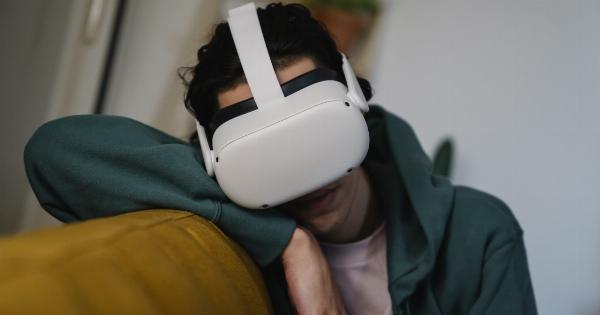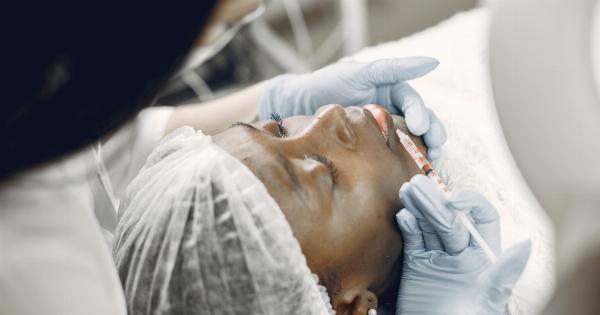In recent years, there has been a significant increase in the number of men opting for eyelid surgery, also known as blepharoplasty.
Previously considered a procedure predominantly chosen by women, the stigma surrounding eyelid surgery for men is slowly dissipating. Men are now more open to exploring cosmetic procedures to enhance their appearance and combat the effects of aging.
This article delves into the reasons behind the rising trend of men seeking eyelid surgery, addresses common misconceptions, and highlights the benefits and considerations for those interested in undergoing the procedure.
The Evolution of Male Grooming
Traditional societal norms placed emphasis on women’s appearance, specifically related to beauty and grooming.
However, over the past few decades, the definition of masculinity has expanded, allowing men to freely express their desire to look and feel their best. As a result, men are now investing more time and effort into their grooming routines, including exploring cosmetic procedures.
Common Reasons for Eyelid Surgery in Men
1. Aging and Sagging Eyelids:.
As men age, the skin around their eyes tends to lose elasticity, resulting in droopy and sagging eyelids. Eyelid surgery can address this issue by removing excess skin and fat deposits, giving a more youthful and alert appearance.
2. Genetics:.
Some men are genetically predisposed to have naturally heavy or hooded eyelids. These genetic characteristics can make the eyes appear tired or aged. Eyelid surgery can help correct this aesthetic concern and provide a more refreshed appearance.
3. Vision Improvement:.
In certain cases, excess skin on the upper eyelids can obstruct the upper field of vision, leading to functional problems. Eyelid surgery can remove this excess skin, allowing for improved vision and enhanced quality of life.
4. Confidence Boost:.
Men, like women, may experience a boost in self-confidence after undergoing eyelid surgery. Feeling more refreshed and youthful can positively impact various aspects of life, including personal relationships and professional interactions.
Dispelling Myths and Overcoming Stigma
1. Eyelid Surgery is Only for Women:.
One of the most common misconceptions is that eyelid surgery is exclusively for women. However, the reality is that men of all ages and backgrounds can benefit from the procedure.
The increasing number of men opting for eyelid surgery attests to its growing popularity among different demographics.
2. Feminizing Effect:.
Another prevailing misconception is that eyelid surgery results in a feminizing effect on men. However, when performed by a skilled and experienced surgeon, blepharoplasty can enhance masculine features while maintaining a natural appearance.
A carefully planned procedure takes into account the unique features of each individual’s face, ensuring a harmonious and balanced outcome.
3. Excessive Downtime and Risks:.
Some men may hesitate to undergo eyelid surgery due to concerns about excessive downtime and associated risks.
However, advancements in cosmetic procedures have significantly reduced recovery time, allowing individuals to resume their daily activities within a short period. Additionally, selecting an experienced surgeon and following post-operative instructions can help minimize risks and complications.
The Eyelid Surgery Procedure
Prior to undergoing eyelid surgery, a detailed consultation with a board-certified plastic surgeon is essential.
The surgeon will assess the individual’s specific concerns, evaluate their overall health, and determine if they are a suitable candidate for the procedure.
During the surgery, the surgeon makes discreet incisions along the natural creases of the eyelids or within the inner membrane of the lower lid, ensuring minimal visible scarring.
Excess skin, fat deposits, and sometimes muscle tissue are carefully removed or rearranged. The surgeon then closes the incisions with sutures, creating a more youthful and refreshed appearance.
Recovery and Aftercare
Following eyelid surgery, individuals may experience temporary swelling, bruising, and dryness around the eyes. Applying cold compresses and prescribed ointments can help alleviate discomfort and reduce inflammation.
It is crucial to follow the surgeon’s post-operative instructions, which may include avoiding strenuous activities, protecting the eyes from the sun, and refraining from wearing contact lenses for a specified period.
Most individuals can return to work and resume their regular activities within a week or two, depending on the extent of the procedure.
However, complete healing may take several weeks, during which time the final results of the surgery gradually become more apparent.
Potential Risks and Considerations
While eyelid surgery is generally safe, it is essential to be aware of potential risks and complications. These may include:.
– Bleeding and infection.
– Adverse reaction to anesthesia.
– Dry eyes or irritation.
– Temporary or permanent changes in sensation around the eyes.
– Scarring.
– Asymmetrical results.
– Difficulty closing the eyes fully.
Choosing a highly skilled and experienced plastic surgeon significantly reduces the likelihood of such complications.
A thorough understanding of the procedure and a realistic expectation of the potential outcomes are crucial for achieving satisfactory results.
The Surge in Male Eyelid Surgery: A Positive Shift
The increasing popularity of eyelid surgery among men signifies a positive societal shift, challenging stereotypes and preconceived notions surrounding cosmetic procedures.
With more men embracing their desire for self-improvement, the stigma once associated with male grooming and enhancements is being dismantled.
Men opting for eyelid surgery are not only seeking aesthetic improvements but are also investing in their overall well-being and self-confidence.
The decision to undergo blepharoplasty should be a personal choice, free from societal judgment and influenced solely by individual desires and goals.
Conclusion
Eyelid surgery, once considered a predominantly female-driven cosmetic procedure, is now gaining popularity among men.
The evolving perception of male grooming, the desire to combat the signs of aging, and the increasing acceptance of cosmetic enhancements contribute to this phenomenon. Men opting for blepharoplasty can achieve a more refreshed appearance, alleviate functional concerns, and experience a boost in self-confidence.
By breaking the stigma surrounding male cosmetic procedures, society is moving towards a more inclusive and accepting future.






























